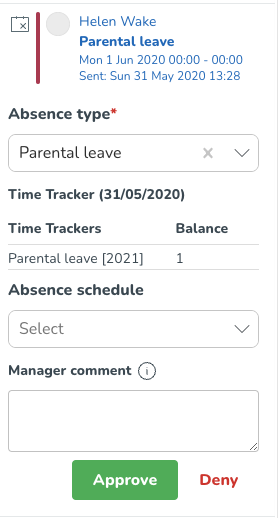Version 0144
Release date October 6, 2022
Prior to this release, in the Display options panel in Schedule and Base schedule, the Metric display mode default value was Totals. Over the past year, many of you have requested functionality that already exists if By agreement is used here instead. This has allow us to understand that many of you are unfamiliar with this functionality. For that reason, and because Quinyx now remembers your selection in Schedule, we have changed the default value to By agreement instead. The difference between the two values is described in more detail here. Note also that when By agreement is selected, hovering over the employee metrics will display the name of the agreement in question and the name of the unit that agreement is tied to, if any.
Release summaryShort on time and just want a high-level summary? Mobile app
Web app
SOAP API / Webservice updates
Bug fixes
|
New functionality
Mobile app
New design and flow for the mobile app log in page
In this release, our mobile app login page has a new flow and design. To log in to the app now, you begin by entering your email address. Then press Continue to go to the next page to enter your password. When you've entered your password, you'll either be logged in immediately or presented with several login options.
OpenID SSO provider - added support for Mobile SSO
We've updated the OpenID provider to support Mobile SSO as well. This means that the provider can be used for login via the mobile app. Read more about the configuration here.
The SAML SSO provider will also be updated in the near future.
Web app
Access right that rules if managers can see unpublished shifts or not in the mobile apps
We've implemented a new access right Mobile and staff portal permissions in the Quinyx web app that controls whether users with a specific staff category and a manager role are able to view unpublished shifts in the mobile app. The permission is named See unpublished shifts as manager. It's turned on by default, which means the default value is that managers can view unpublished shifts in the mobile app.
Change absence type when approving absence requests
As of this release, we've added a possibility to change Absence type on an Absence request in the notification panel. Thank you to all of you who gave us feedback that this functionality would be really useful!

A manager can now update absence type when approving absence requests. When absence type is updated and the absence request is approved, that absence type will subsequently be visible in the absence type field of that same absence. If instead, an absence type is updated on an absence request that's being denied, that change will not be reflected anywhere. The default value of this field will be the absence type selected by the employee when the absence request was created. When selecting the absence type, the list of possible absence types will be the same as the one manager can see when manually adding the absence for the same employee.
This feature is useful because it allows you as a manager to update absence type in the cases where there has been a miscommunication with the employee and where absence type needs to be updated in order to have correct Time Tracker balance and employee's payslip.
Event management
You can now define events! Events are any occurrences that either would result in an increase or a decrease of your forecast values and will therefore impact optimal headcount values. Defining events ensures that your forecasts are more realistic during these special occurrences while also making sure that you schedule according to the correct required headcount. Read more about Event management.
Updates and performance improvements
- We’re releasing important technical improvements relating to our Schedule filters. These won’t impact you noticeably per se, but they do come with two implications that will, namely:
- Quinyx remembers quite a few options for you in Schedule. This "memory" will be reset upon release for all users. It will only happen right at the time of release, and any options re-configured upon this reset will be remembered by Quinyx again, just like you're used to.
- For up to three hours following release, none of your saved views will display in Schedule. They will reappear sometime during those three hours.
- We've added the time on the absence request/approved absence that indicates which part of the day is covered with that absence request/absence. This will help visibility and scheduling when you're looking at the schedule from a weekly/monthly/custom view.

Bug fixes
- Resolved an issue that prevented adding an absence on an employee’s shift when symbols were present in the Manager comment section.
- Resolved an agreement template issue that failed to trigger a warning when the cost period value was exceeded.
- Resolved an issue that caused Worked/Rolled out hours to not display in employee metrics.
- Resolved an issue that caused a planned shift change to a free day shift not to remove a punch when deviation reporting was used.
- Resolved an issue that caused the end date of a schedule period displayed in the schedule to be different than the schedule period displayed in employee metrics.
- Resolved an issue with viewing the Time card after refreshing the page, and the Time card could only be viewed again by first navigating to another tab and back.
- Resolved an issue that caused scheduled tasks to not appear in chronological order.
New HelpDocs articles
SOAP API / Webservice updates
The following endpoints will be updated in the next upcoming sprints. This is necessary for us to do in order to add new functionality for compensation rules. These are configuration endpoints, and our data shows no active integrations running towards them.
New input parameters will be added as well as new response objects.
3.36 wsdlGetSalaryCompensations
3.37 wsdlUpdateSalaryCompensations
3.38 wsdlDeleteSalaryCompensations
Endpoints being deprecated and removed
No endpoints are currently deprecated and planned for removal.
Please make sure to forward this information to the party within your company responsible for integrations.

